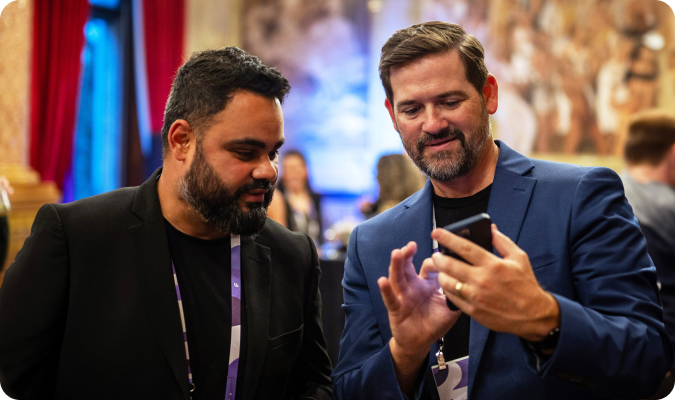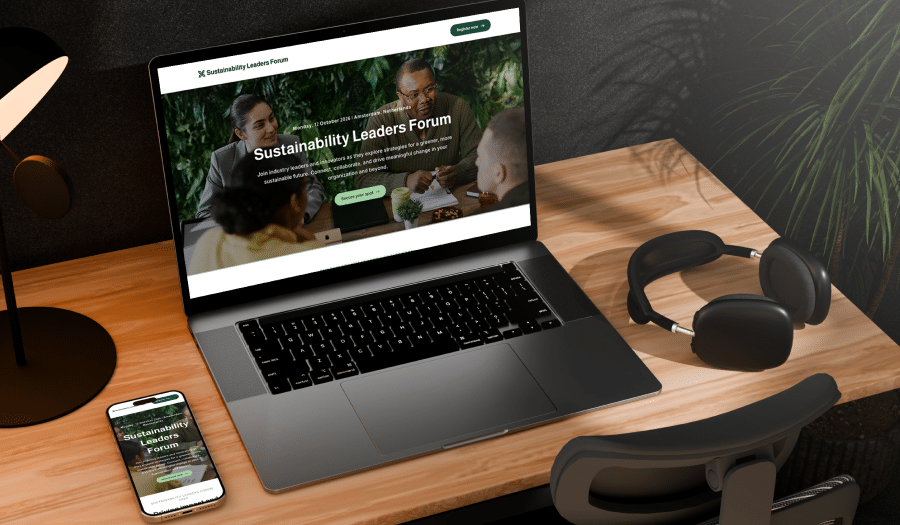
You’re capturing more data than ever—registration trends, attendee behaviors, session engagement, post-event feedback—but translating all that into real-world improvements? That’s where many event planners get stuck.
It’s not a lack of information. It’s a lack of clarity on how to use it.
Whether you’re part of an association, a corporate events team, or a Professional Conference Organizer, making data-driven decisions is key to designing experiences that feel seamless, engaging, and worth the investment. But to do that, you need strategies, not just stats.
In this EventsAir guide, we’ll walk through 7 practical ways to turn your event data into smarter planning, more personalized experiences, and measurable ROI. From pre-event marketing to post-event reporting, you’ll learn how to make every data point work harder for your next event.
What is event management data?
Event management data refers to the information collected throughout the entire event lifecycle, from initial planning and registration to post-event feedback and analytics.
This includes everything from:
- How attendees found your event
- Which sessions they attended
- How long they stayed
- What they clicked on
- How they rated their experience
All this data provides critical insights that help event professionals make smarter decisions, fine-tune experiences, and ultimately deliver more successful events.
Why event management data matters
- Refines event design: Data reveals attendee preferences, helping you tailor content and experiences that resonate with your audience. EventsAir’s analytics and reporting tools make it easy to collect and analyze this data, so you can design events that meet your attendees’ expectations.
- Improves engagement: Understanding what drives participation lets you create sessions and activities that keep attendees actively involved.
- Streamlines logistics: Data helps identify logistical bottlenecks, so you can optimize schedules, venue layouts, and staffing for smoother operations.
- Enhances personalization: With data, you can personalize experiences like session recommendations or networking opportunities, making each event more relevant for attendees.
- Measures impact: Analyzing event outcomes lets you gauge which aspects were successful and which need adjustment, allowing you to continuously improve future events.
7 Effective ways to leverage event management data for better event design
1. Personalize marketing and outreach
Event design doesn’t start on the event day; it begins the moment you launch your marketing campaign. Leveraging past event data to personalize your outreach not only boosts registration rates but also ensures you’re attracting the right audience, setting your event up for greater success from the outset.
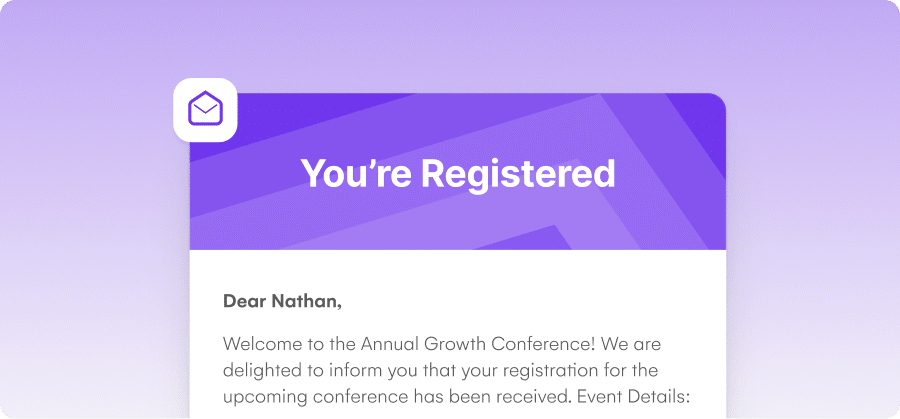
Here’s how you can use event data to refine your pre-event strategy:
- Segment your audience: Use data from previous events, such as session attendance, engagement levels, and interests, to group attendees and tailor messaging accordingly. A returning attendee interested in workshops should receive different content than a new prospect interested in keynote sessions.
- Target high-converting channels: Review which marketing channels brought in your most engaged attendees. Was it LinkedIn ads, email, or partner referrals? Focus your budget on what has proven to work.
- Optimize campaigns through A/B testing: Use historical open and click-through rates to test and refine subject lines, email formats, and calls to action. Over time, this improves message clarity and conversion performance.
2. Understand your attendees’ preferences
One of the smartest ways to use event management data is by gaining a clear understanding of your attendees’ preferences. Collecting demographic, behavioral, and feedback data reveals what your audience truly wants from your event.
Key data points to focus on include:
- Session topics: Which subjects generate the most interest?
- Preferred formats: Do attendees favor workshops, panels, or keynote speeches?
- Time slots: What times see the highest attendance or engagement?
- Networking interests: What types of connections are attendees seeking?
For example, if surveys indicate a strong preference for interactive workshops, you can prioritize those formats in your agenda. If networking opportunities are a top priority, you can build more time and spaces for meaningful connections.
EventsAir’s platform simplifies this process with built-in registration and survey tools that capture valuable attendee data before and during your event. These tools allow you to collect responses effortlessly, providing a comprehensive picture of your audience’s expectations.
Aligning your event design with these insights leads to more relevant content, stronger engagement, and higher attendee satisfaction, all of which contribute to improved attendance rates and more successful event outcomes.
3. Optimize event formats and content
Building on the insights gained from understanding your attendees’ preferences, the next logical step is to refine your event content and formats. Once you know what your audience wants, data helps you deliver it in the most effective way possible.
Use event data to evaluate and refine:
- Session types: Are attendees more engaged in workshops, panels, or keynote addresses?
- Delivery formats: How do in-person sessions compare to virtual or hybrid ones in terms of attendance and engagement?
Metrics like attendance rates, in-session poll participation, and feedback scores offer a clear view of what’s working. For example, if attendees are consistently rating roundtable sessions higher than lectures, or if virtual sessions are seeing more drop-offs, that’s a signal to adapt your content strategy.
Tips for using data to adjust your agenda:
- Promote formats that drive the highest engagement
- Rework or replace underperforming session types
- Maintain a healthy balance of content styles based on past performance
This approach ensures your agenda reflects not just what your audience wants to learn, but how they want to experience it.
4. Enhance attendee engagement
Keeping attendees engaged throughout your event is critical, but doing it well requires more than just good content. It takes real-time insight into how your audience is interacting and the flexibility to respond to that data with the right tools.
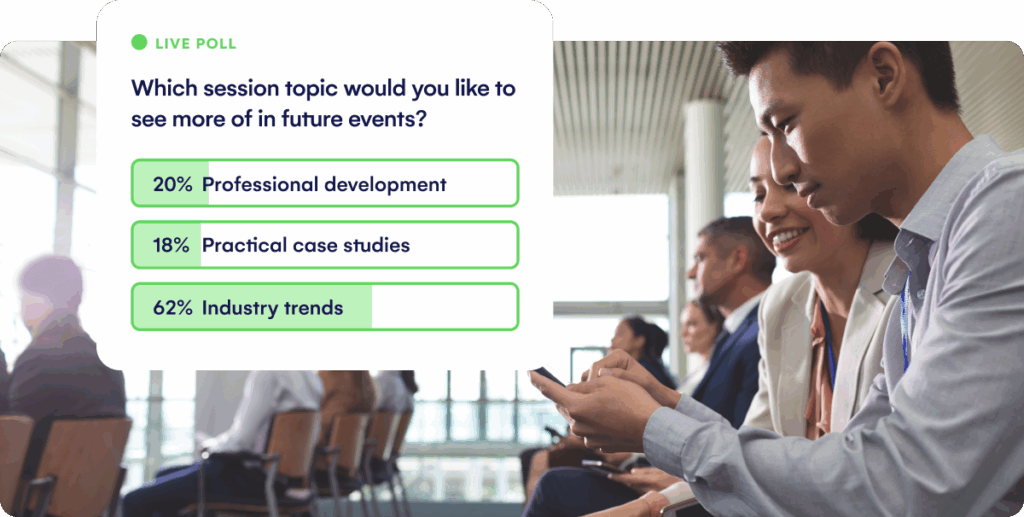
Unlike general performance metrics like attendance or session popularity, engagement data tracks how attendees actually interact with your event:
- Poll participation rates
- Q&A activity levels
- In-app feature usage (e.g., session bookmarks, networking chat)
- Audience feedback during sessions
By identifying which sessions generate the most interaction, or where engagement lags, you can fine-tune your programming. If participation dips during longer presentations, that’s a cue to introduce more interactive formats, like panel discussions or live polls. If networking chat is active during certain time blocks, consider expanding those moments across the agenda.
Tactics to boost engagement based on data insights:
- Launch gamification elements like leaderboards or scavenger hunts to drive activity
- Increase live audience participation through polls, quizzes, and open Q&As
- Encourage use of the event app to facilitate one-on-one networking or group discussions
With EventsAir, engagement isn’t a guessing game. Its built-in tools, like live polling, gamification modules, and branded mobile apps, help organizers track and improve participation in real time.
5. Improve event logistics and flow
Efficient logistics are the backbone of any successful event. Event management data provides crucial insights into how attendees move through your event and where potential bottlenecks occur.
By analyzing data such as:
- Check-in times — Are attendees experiencing delays at registration desks or kiosks?
- Session attendance patterns — Which sessions attract large crowds that may overwhelm space or resources?
- Onsite movement and crowd flow — Are there congested areas causing discomfort or delays?
These metrics help you identify where adjustments are needed to improve the overall event experience.

Examples of data-driven logistics improvements include:
- Increasing staffing or opening additional check-in kiosks during peak arrival times
- Redesigning venue layouts to ease traffic flow between popular sessions or exhibitor areas
- Adjusting schedules to stagger high-demand sessions and reduce crowding
EventsAir supports these efforts with its seamless self check-in kiosks that speed up attendee arrivals and reduce lines. Its extensive logistics features provide event planners with live updates on session attendance and resource usage, enabling quick action to prevent delays or congestion.
6. Boost sponsor and exhibitor ROI
Your sponsors and exhibitors are investing time and money into your event, and they expect measurable returns. Event management data plays a key role in demonstrating value and strengthening those relationships.
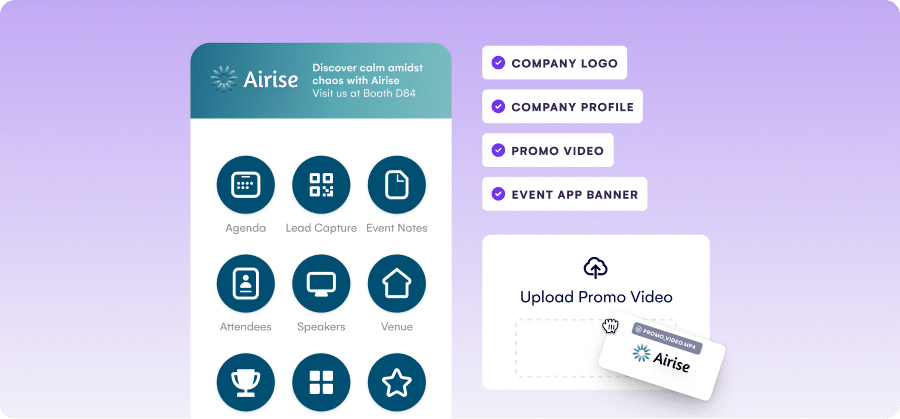
Key data points sponsors care about include:
- Lead capture numbers – How many qualified leads were collected per booth or session?
- Booth visit traffic – Which times saw the most interaction?
- Attendee engagement – How many attendees interacted with sponsor content or promotions?
By tracking this information and turning it into digestible post-event reports, you help sponsors clearly see their ROI. It also gives them the insights they need to refine their strategy for future events, improving booth setup, timing, and messaging.
Tips for maximizing sponsor value through data:
- Provide sponsors with custom reports that highlight their top-performing moments
- Share attendee interaction metrics, such as downloads, meeting requests, or scanned badges
- Ensure they have instant access to lead capture for timely follow-up to their target accounts
See our full guide to maximizing event sponsorship opportunities.
EventsAir makes all of this easy with its lead capture tools, exhibitor self-service portals, and automated reporting features. Sponsors can view real-time performance metrics and access their leads immediately, making post-event follow-up faster and more effective.
7. Leverage post-event analysis for continuous improvement
Your event doesn’t end when the last session wraps up. In fact, some of the most valuable insights come after the event is over. Post-event analysis is where data transforms from observation into long-term strategy.

Reviewing your event data holistically helps you answer critical questions:
- Which sessions delivered the most value?
- Where did engagement peak or fall off?
- Were marketing and logistics efforts cost-effective?
- Did you meet your attendance, engagement, or revenue goals?
Surveys, attendance trends, engagement metrics, and financial reports all contribute to a complete picture of performance. Look for patterns, outliers, and recurring challenges. This information not only helps evaluate the current event’s success but also informs better decisions for the next one.
Best practices for effective post-event analysis:
- Collect feedback from attendees, sponsors, and internal teams
- Compare event metrics to your pre-defined goals and KPIs
- Document lessons learned, what worked, what didn’t, and why
- Create benchmarks to measure improvement over time
When you treat every event as a data source, you create a continuous feedback loop that sharpens your strategy. Each event becomes a stepping stone to a more refined, engaging, and efficient future experience.
Bonus strategies for improving your events with data
- Track email engagement patterns: Monitor open rates, click-throughs, and unsubscribe patterns across your email campaigns to refine your communication schedule and messaging cadence.
- Analyze no-show rates by ticket type: Identify whether free or discounted ticket holders are more likely to skip the event. Use this insight to adjust ticketing strategy or implement reminder flows and incentives.
- Monitor app feature usage: Discover which features attendees used most, like agenda planners, networking tools, or maps. Prioritize and enhance those in future event apps to improve UX.
- Identify drop-off points in virtual events: Pinpoint when online attendees are leaving a session or the platform entirely. This helps improve content pacing, transitions, and tech performance for future virtual/hybrid events.
- Use Heatmaps for Venue Layout Optimization: Sensor or RFID-based heatmaps show where attendees spend the most time. Use this data to improve exhibitor placements, lounge areas, or signage visibility.
Turn event data into actionable insights with EventsAir
Even the most well-planned events fall short if they don’t evolve with audience expectations. And while most organizers collect plenty of data, few actually use it to drive better decisions.
EventsAir makes it easy to put your data to work. Its built-in tools capture real-time attendee behavior, automate lead tracking, and generate detailed post-event reports. You can refine your agenda, improve marketing precision, and solve logistical challenges, all from one platform designed to help you create better event experiences.
Ready to stop guessing and start designing smarter events? Get started with EventsAir today.
Best Practice | Event Planning & Management
See EventsAir in action
Discover why 12,000+ event professionals trust EventsAir to deliver effortless events, every time.
